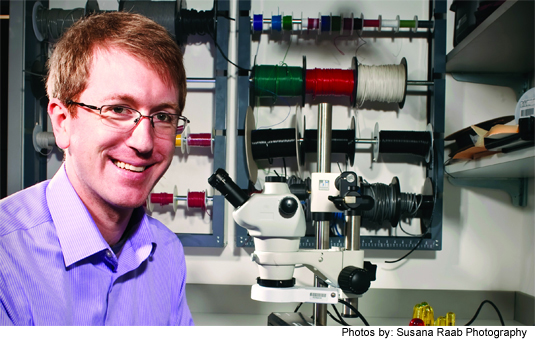Guss Lott, an ’01 electrical engineering and physics graduate, designs virtual reality systems for insects and rats in order to study their brains – bridging the worlds of neuroscience and engineering.
’01 Electrical Engineering, Physics
’07 Biophysics Ph.D., Cornell University
Instrumentation systems engineer
Howard Hughes Medical Institute’s Janelia Farm Campus
Ashburn, Virginia
Typical day . . . helping research scientists develop virtual reality systems for animals, such as fruit flies or rodents,to monitor how sensors, processors and actuators in our brains respond to stimuli
Engineering challenge . . . developing electrical engineering-based tools and systems that help biologists control what goes into their experiments and measure what comes out
My Auburn Engineering . . . taught me the importance of a system’s stability – that an increase in gain doesn’t always get the response you want – and showed me how I could apply that to everything I might encounter
Geek moment . . . thinking about neuroscience and how our brains work as a system when parenting my 1O-month old son; approaching him differently because I know he’s receiving inputs from another electrochemical system – me –and adapting to his environment
Turning point . . . watching neurons react in a crawfish tail; developing a signal analysis tool while at Cornell after I realized that neuroscience is really electrical engineering spoken in a slightly different language
Sense of pride . . . creating engineering tools that enable biological researchers to answer fundamental questions and gain a better understanding of neural circuits in the brains of life forms
Lott was featured in an article called Dream Jobs 2011 in the Institute of Electrical and Electronics Engineers’ Spectrum magazine. He was also recently interviewed by Wired magazine. Read more on Lott’s signal analysis software tool, Spike Hound, a free, open source MAT LAB product.
